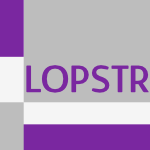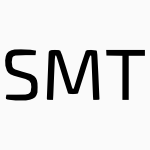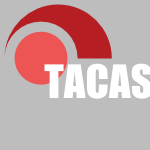170 papers:
 DAC-2015-Kahng #game studies
DAC-2015-Kahng #game studies- New game, new goal posts: a recent history of timing closure (ABK), p. 6.
 SAS-2015-LeeHYC #static analysis
SAS-2015-LeeHYC #static analysis- Static Analysis with Set-Closure in Secrecy (WL, HH, KY, JHC), pp. 18–35.
 CIAA-J-2013-KutribMMPW15 #automaton #decidability #finite #queue
CIAA-J-2013-KutribMMPW15 #automaton #decidability #finite #queue- Deterministic input-driven queue automata: Finite turns, decidability, and closure properties (MK, AM, CM, BP, MW), pp. 58–71.
 ICALP-v2-2015-Zetzsche #approach
ICALP-v2-2015-Zetzsche #approach- An Approach to Computing Downward Closures (GZ), pp. 440–451.
 LATA-2015-BachmeierLS #automaton #complexity #finite
LATA-2015-BachmeierLS #automaton #complexity #finite- Finite Automata for the Sub- and Superword Closure of CFLs: Descriptional and Computational Complexity (GB, ML, MS), pp. 473–485.
 SAC-2015-MoreiraJR #analysis #reduction #similarity #visual notation
SAC-2015-MoreiraJR #analysis #reduction #similarity #visual notation- Visual similarity analysis in loop closure through data dimensionality reduction via diffusion maps (LASM, CMJ, PFFR), pp. 289–294.
 DAC-2014-HeldS #optimisation
DAC-2014-HeldS #optimisation- Post-Routing Latch Optimization for Timing Closure (SH, US), p. 6.
 DAC-2014-WuWNBP #on the
DAC-2014-WuWNBP #on the- On Timing Closure: Buffer Insertion for Hold-Violation Removal (PCW, MDFW, IN, SB, VP), p. 6.
 DLT-J-2013-DassowMMM14
DLT-J-2013-DassowMMM14- Inner Palindromic Closure (JD, FM, RM, MM), pp. 1049–1064.
 CIAA-2014-JiraskovaPS
CIAA-2014-JiraskovaPS- Kleene Closure on Regular and Prefix-Free Languages (GJ, MP, JS), pp. 226–237.
 DLT-2014-DayRS #pattern matching
DLT-2014-DayRS #pattern matching- Closure Properties of Pattern Languages (JDD, DR, MLS), pp. 279–290.
 KDD-2014-SintosT #network #social #using
KDD-2014-SintosT #network #social #using- Using strong triadic closure to characterize ties in social networks (SS, PT), pp. 1466–1475.
 KR-2014-Dufour-LussierHBL #algebra
KR-2014-Dufour-LussierHBL #algebra- Belief Revision in the Propositional Closure of a Qualitative Algebra (VDL, AH, FLB, JL).
 ECOOP-2014-MillerHO #concurrent #named #type system
ECOOP-2014-MillerHO #concurrent #named #type system- Spores: A Type-Based Foundation for Closures in the Age of Concurrency and Distribution (HM, PH, MO), pp. 308–333.
 LOPSTR-2014-Danilenko #functional
LOPSTR-2014-Danilenko #functional- Functional Kleene Closures (ND), pp. 241–258.
 LICS-CSL-2014-CharatonikKM #decidability #logic #transitive
LICS-CSL-2014-CharatonikKM #decidability #logic #transitive- Decidability of weak logics with deterministic transitive closure (WC, EK, FM), p. 10.
 DATE-2013-WeiLSHAS #design #effectiveness #named
DATE-2013-WeiLSHAS #design #effectiveness #named- CATALYST: planning layer directives for effective design closure (YW, ZL, CCNS, SH, CJA, SSS), pp. 1873–1878.
 CIAA-2013-KutribMMPW #automaton #decidability #finite #queue
CIAA-2013-KutribMMPW #automaton #decidability #finite #queue- Input-Driven Queue Automata: Finite Turns, Decidability, and Closure Properties (MK, AM, CM, BP, MW), pp. 232–243.
 DLT-2013-CurrieRS #sequence #word
DLT-2013-CurrieRS #sequence #word- Extremal Words in the Shift Orbit Closure of a Morphic Sequence (JDC, NR, KS), pp. 143–154.
 DLT-2013-DassowMMM
DLT-2013-DassowMMM- Inner Palindromic Closure (JD, FM, RM, MM), pp. 155–166.
 DLT-2013-FulopM #composition #linear #top-down #transducer
DLT-2013-FulopM #composition #linear #top-down #transducer- Composition Closure of ε-Free Linear Extended Top-Down Tree Transducers (ZF, AM), pp. 239–251.
 LATA-2013-JacquemardR #automaton #term rewriting
LATA-2013-JacquemardR #automaton #term rewriting- Rewrite Closure and CF Hedge Automata (FJ, MR), pp. 371–382.
 SEFM-2013-PerceboisST #graph transformation #invariant #transitive #verification
SEFM-2013-PerceboisST #graph transformation #invariant #transitive #verification- Rule-Level Verification of Graph Transformations for Invariants Based on Edges’ Transitive Closure (CP, MS, HNT), pp. 106–121.
 GT-VMT-2013-KupperKB #category theory
GT-VMT-2013-KupperKB #category theory- Concatenation and other Closure Properties of Recognizable Languages in Adhesive Categories (SK, BK, HJSB).
 CSCW-2013-GaoHZ #how #network #social
CSCW-2013-GaoHZ #how #network #social- Closure vs. structural holes: how social network information and culture affect choice of collaborators (GG, PJH, CZ), pp. 5–18.
 SEKE-2013-AbdouGK #open source #process #testing
SEKE-2013-AbdouGK #open source #process #testing- Managing Corrective Actions to Closure in Open Source Software Test Process (TA, PG, PK), pp. 306–311.
 CSL-2013-AfshariL #calculus #on the #μ-calculus
CSL-2013-AfshariL #calculus #on the #μ-calculus- On closure ordinals for the modal μ-calculus (BA, GEL), pp. 30–44.
 DAC-2012-LiANSVZ #design #physics #predict
DAC-2012-LiANSVZ #design #physics #predict- Guiding a physical design closure system to produce easier-to-route designs with more predictable timing (ZL, CJA, GJN, CCNS, NV, NYZ), pp. 465–470.
 SAS-2012-BiallasBKK
SAS-2012-BiallasBKK- Loop Leaping with Closures (SB, JB, AK, SK), pp. 214–230.
 ICGT-2012-BergmannRSTV #incremental #pattern matching #performance #transitive
ICGT-2012-BergmannRSTV #incremental #pattern matching #performance #transitive- Incremental Pattern Matching for the Efficient Computation of Transitive Closure (GB, IR, TS, PT, DV), pp. 386–400.
 CSL-2012-KieronskiM #logic #transitive
CSL-2012-KieronskiM #logic #transitive- Two-Variable Universal Logic with Transitive Closure (EK, JM), pp. 396–410.
 LICS-2012-KieronskiMPT #equivalence #first-order #logic
LICS-2012-KieronskiMPT #equivalence #first-order #logic- Two-Variable First-Order Logic with Equivalence Closure (EK, JM, IPH, LT), pp. 431–440.
 RTA-2012-Al-HassaniMCS #problem #term rewriting
RTA-2012-Al-HassaniMCS #problem #term rewriting- A Term Rewriting System for Kuratowski’s Closure-Complement Problem (OAH, QaM, CSC, VS), pp. 38–52.
 DATE-2011-Al-DujailyMXYP #concurrent #detection #network #runtime #transitive #using
DATE-2011-Al-DujailyMXYP #concurrent #detection #network #runtime #transitive #using- Run-time deadlock detection in networks-on-chip using coupled transitive closure networks (RAD, TSTM, FX, AY, MP), pp. 497–502.
 DATE-2011-LiuSTV #design #generative #towards #using #validation
DATE-2011-LiuSTV #design #generative #towards #using #validation- Towards coverage closure: Using GoldMine assertions for generating design validation stimulus (LL, DS, WT, SV), pp. 173–178.
 SAS-2011-VerdoolaegeCB #approximate #integer #transitive #tuple
SAS-2011-VerdoolaegeCB #approximate #integer #transitive #tuple- Transitive Closures of Affine Integer Tuple Relations and Their Overapproximations (SV, AC, AB), pp. 216–232.
 DLT-J-2009-BrzozowskiGS11 #formal method #theorem
DLT-J-2009-BrzozowskiGS11 #formal method #theorem- Closures in Formal Languages and Kuratowski’s Theorem (JAB, EG, JS), pp. 301–321.
 AFL-2011-Ito #strict
AFL-2011-Ito #strict- K-Restricted Duplication Closure of Languages (MI), pp. 28–33.
 ICALP-v1-2011-BermanBGRWY #transitive
ICALP-v1-2011-BermanBGRWY #transitive- Steiner Transitive-Closure Spanners of Low-Dimensional Posets (PB, AB, EG, SR, DPW, GY), pp. 760–772.
 SAC-2011-DingSW #algorithm #parallel #transitive
SAC-2011-DingSW #algorithm #parallel #transitive- FPGA based parallel transitive closure algorithm (ZD, WS, MYW), pp. 393–394.
 ICALP-v2-2010-BolligGMZ #automaton #logic #transitive
ICALP-v2-2010-BolligGMZ #automaton #logic #transitive- Pebble Weighted Automata and Transitive Closure Logics (BB, PG, BM, MZ), pp. 587–598.
 ICALP-v2-2010-HabermehlMW #petri net
ICALP-v2-2010-HabermehlMW #petri net- The Downward-Closure of Petri Net Languages (PH, RM, HW), pp. 466–477.
 ICALP-v2-2010-McIverMM #composition #probability
ICALP-v2-2010-McIverMM #composition #probability- Compositional Closure for Bayes Risk in Probabilistic Noninterference (AM, LM, CM), pp. 223–235.
 ICPR-2010-BhatBSS #sequence #transitive #video #visual notation #word
ICPR-2010-BhatBSS #sequence #transitive #video #visual notation #word- Transitive Closure Based Visual Words for Point Matching in Video Sequence (KKSB, MOB, GS, FS), pp. 3300–3303.
 TOOLS-EUROPE-2010-HalleuxT #named
TOOLS-EUROPE-2010-HalleuxT #named- Moles: Tool-Assisted Environment Isolation with Closures (JdH, NT), pp. 253–270.
 SAC-OOPS-J-2008-JarviF10 #c++
SAC-OOPS-J-2008-JarviF10 #c++- C++ λ expressions and closures (JJ, JF), pp. 762–772.
 SAC-2010-BelohlavekV #concept analysis #constraints
SAC-2010-BelohlavekV #concept analysis #constraints- Background knowledge in formal concept analysis: constraints via closure operators (RB, VV), pp. 1113–1114.
 DLT-2009-BrzozowskiGS #formal method #theorem
DLT-2009-BrzozowskiGS #formal method #theorem- Closures in Formal Languages and Kuratowski’s Theorem (JAB, EG, JS), pp. 125–144.
 ICALP-v2-2009-BrancoP #equation #polynomial #regular expression
ICALP-v2-2009-BrancoP #equation #polynomial #regular expression- Equations Defining the Polynomial Closure of a Lattice of Regular Languages (MJJB, JÉP), pp. 115–126.
 ICALP-v2-2009-Michaliszyn #decidability #transitive
ICALP-v2-2009-Michaliszyn #decidability #transitive- Decidability of the Guarded Fragment with the Transitive Closure (JM), pp. 261–272.
 LICS-2009-ChatterjeeDH
LICS-2009-ChatterjeeDH- Expressiveness and Closure Properties for Quantitative Languages (KC, LD, TAH), pp. 199–208.
 LICS-2009-CreusGMT #normalisation #term rewriting
LICS-2009-CreusGMT #normalisation #term rewriting- Non-linear Rewrite Closure and Weak Normalization (CC, GG, FM, AT), pp. 365–374.
 PODS-2008-CateS #automaton #logic #transitive #xpath
PODS-2008-CateS #automaton #logic #transitive #xpath- XPath, transitive closure logic, and nested tree walking automata (BtC, LS), pp. 251–260.
 PEPM-2008-KameyamaKS #staged
PEPM-2008-KameyamaKS #staged- Closing the stage: from staged code to typed closures (YK, OK, CcS), pp. 147–157.
 ICALP-B-2008-GomezGP #commutative #question
ICALP-B-2008-GomezGP #commutative #question- When Does Partial Commutative Closure Preserve Regularity? (ACG, GG, JÉP), pp. 209–220.
 ICFP-2008-AhmedB #equivalence
ICFP-2008-AhmedB #equivalence- Typed closure conversion preserves observational equivalence (AA, MB), pp. 157–168.
 ICPR-2008-MirzaeiR #clustering #transitive #using
ICPR-2008-MirzaeiR #clustering #transitive #using- Combining hierarchical clusterings using min-transitive closure (AM, MR), pp. 1–4.
 ICPR-2008-ZhangW #clustering #order #ranking
ICPR-2008-ZhangW #clustering #order #ranking- Partial closure-based constrained clustering with order ranking (SZ, HSW), pp. 1–4.
 PPDP-2008-OlarteV #monad #security
PPDP-2008-OlarteV #monad #security- The expressivity of universal timed CCP: undecidability of Monadic FLTL and closure operators for security (CO, FDV), pp. 8–19.
 SMT-2007-ConchonCKL08 #congruence #semantics
SMT-2007-ConchonCKL08 #congruence #semantics- CC(X): Semantic Combination of Congruence Closure with Solvable Theories (SC, EC, JK, SL), pp. 51–69.
 CAV-2008-BaswanaMP #consistency #memory management #set #verification
CAV-2008-BaswanaMP #consistency #memory management #set #verification- Implied Set Closure and Its Application to Memory Consistency Verification (SB, SKM, VP), pp. 94–106.
 CSL-2008-Katsumata
CSL-2008-Katsumata- A Characterisation of λ Definability with Sums Via TT-Closure Operators (SyK), pp. 278–292.
 RTA-2008-JacquemardR
RTA-2008-JacquemardR- Closure of Hedge-Automata Languages by Hedge Rewriting (FJ, MR), pp. 157–171.
 VMCAI-2008-BagnaraHZ #algorithm #constraints #integer
VMCAI-2008-BagnaraHZ #algorithm #constraints #integer- An Improved Tight Closure Algorithm for Integer Octagonal Constraints (RB, PMH, EZ), pp. 8–21.
 CASE-2007-CheongS #independence
CASE-2007-CheongS #independence- Computing All Independent Form-Closure Grasp Regions of a Rectilinear Polyhedron (JSC, AFvdS), pp. 288–294.
 DATE-2007-LinXZ #design #network
DATE-2007-LinXZ #design #network- Design closure driven delay relaxation based on convex cost network flow (CL, AX, HZ), pp. 63–68.
 POPL-2007-SiskindP #standard
POPL-2007-SiskindP #standard- First-class nonstandard interpretations by opening closures (JMS, BAP), pp. 71–76.
 PODS-2006-Cate #transitive #xpath
PODS-2006-Cate #transitive #xpath- The expressivity of XPath with transitive closure (BtC), pp. 328–337.
 DLT-2006-DAlessandroRV #finite #order #set
DLT-2006-DAlessandroRV #finite #order #set- Well Quasi Orders and the Shuffle Closure of Finite Sets (FD, GR, SV), pp. 260–269.
 DLT-2006-ItoLS #bound
DLT-2006-ItoLS #bound- Closure of Language Classes Under Bounded Duplication (MI, PL, KST), pp. 238–247.
 DLT-2006-Jurdzinski #context-sensitive grammar
DLT-2006-Jurdzinski #context-sensitive grammar- The Boolean Closure of Growing Context-Sensitive Languages (TJ), pp. 248–259.
 SAC-2006-ChenC #on the #representation #transitive
SAC-2006-ChenC #on the #representation #transitive- On the transitive closure representation and adjustable compression (YC, DC), pp. 450–455.
 CC-2006-YasugiHY #execution #lightweight #stack
CC-2006-YasugiHY #execution #lightweight #stack- Lightweight Lexical Closures for Legitimate Execution Stack Access (MY, TH, TY), pp. 170–184.
 ICLP-2006-LiKL
ICLP-2006-LiKL- Collapsing Closures (XL, AK, LL), pp. 148–162.
 VMCAI-2006-SchachteS
VMCAI-2006-SchachteS- Closure Operators for ROBDDs (PS, HS), pp. 1–16.
 CSL-2005-Kolokolova #bound
CSL-2005-Kolokolova #bound- Closure Properties of Weak Systems of Bounded Arithmetic (AK), pp. 369–383.
 LICS-2005-KupkeV #algebra #automaton
LICS-2005-KupkeV #algebra #automaton- Closure Properties of Coalgebra Automata (CK, YV), pp. 199–208.
 RTA-2005-NieuwenhuisO #congruence
RTA-2005-NieuwenhuisO #congruence- Proof-Producing Congruence Closure (RN, AO), pp. 453–468.
 DAC-2004-EdmanS #design
DAC-2004-EdmanS #design- Timing closure through a globally synchronous, timing partitioned design methodology (AE, CS), pp. 71–74.
 DAC-2004-Kung #design
DAC-2004-Kung #design- Timing closure for low-FO4 microprocessor design (DSK), pp. 265–266.
 DAC-2004-VujkovicWSS #performance
DAC-2004-VujkovicWSS #performance- Efficient timing closure without timing driven placement and routing (MV, DW, WS, CS), pp. 268–273.
 DAC-2004-ZhangDRRC #performance #synthesis #towards
DAC-2004-ZhangDRRC #performance #synthesis #towards- A synthesis flow toward fast parasitic closure for radio-frequency integrated circuits (GZ, EAD, RAR, RAR, LRC), pp. 155–158.
 DLT-2004-KutribMW #context-free grammar #linear
DLT-2004-KutribMW #context-free grammar #linear- The Boolean Closure of Linear Context-Free Languages (MK, AM, DW), pp. 284–295.
 SAC-J-2003-ShinjoKP04 #imperative #interface #performance
SAC-J-2003-ShinjoKP04 #imperative #interface #performance- Efficient mediators with closures for handling dynamic interfaces in an imperative language (YS, TK, CP), pp. 351–357.
 SAC-2004-Chen #algorithm #transitive
SAC-2004-Chen #algorithm #transitive- A new algorithm for computing transitive closures (YC), pp. 1091–1092.
 CSL-2004-ImmermanRRSY #bound #decidability #logic #transitive
CSL-2004-ImmermanRRSY #bound #decidability #logic #transitive- The Boundary Between Decidability and Undecidability for Transitive-Closure Logics (NI, AMR, TWR, SS, GY), pp. 160–174.
 IJCAR-2004-GodoyT #term rewriting
IJCAR-2004-GodoyT #term rewriting- Deciding Fundamental Properties of Right-(Ground or Variable) Rewrite Systems by Rewrite Closure (GG, AT), pp. 91–106.
 DAC-2003-ShiG #hybrid #performance #power management
DAC-2003-ShiG #hybrid #performance #power management- Hybrid hierarchical timing closure methodology for a high performance and low power DSP (KS, GG), pp. 850–855.
 ICEIS-v1-2003-RossiterNH #formal method #information management #middleware #tool support
ICEIS-v1-2003-RossiterNH #formal method #information management #middleware #tool support- Formalizing Types with Ultimate Closure for Middleware Tools in Information Systems Engineering (BNR, DAN, MAH), pp. 366–373.
 KDD-2003-CasaliCL #semantics #using
KDD-2003-CasaliCL #semantics #using- Extracting semantics from data cubes using cube transversals and closures (AC, RC, LL), pp. 69–78.
 RTA-2003-Verma #automaton #decidability #equation
RTA-2003-Verma #automaton #decidability #equation- Two-Way Equational Tree Automata for AC-Like Theories: Decidability and Closure Properties (KNV), pp. 180–196.
 STOC-2002-BaswanaHS #algorithm #maintenance #transitive
STOC-2002-BaswanaHS #algorithm #maintenance #transitive- Improved decremental algorithms for maintaining transitive closure and all-pairs shortest paths (SB, RH, SS), pp. 117–123.
 RTA-2002-OhsakiT #decidability #equation
RTA-2002-OhsakiT #decidability #equation- Decidability and Closure Properties of Equational Tree Languages (HO, TT), pp. 114–128.
 DAC-2001-LinC #graph #named #representation #transitive
DAC-2001-LinC #graph #named #representation #transitive- TCG: A Transitive Closure Graph-Based Representation for Non-Slicing Floorplans (JML, YWC), pp. 764–769.
 ICFP-2001-DimockWMTW #ml #standard #type safety
ICFP-2001-DimockWMTW #ml #standard #type safety- Functioning without Closure: Type-Safe Customized Function Representations for Standard ML (AD, IW, RM, FAT, JBW), pp. 14–25.
 IJCAR-2001-Giese #incremental
IJCAR-2001-Giese #incremental- Incremental Closure of Free Variable Tableaux (MG), pp. 545–560.
 DAC-2000-PoslusznyABCDFHKKLMNPPSTV #design
DAC-2000-PoslusznyABCDFHKKLMNPPSTV #design- “Timing closure by design”, a high frequency microprocessor design methodology (SDP, NA, DB, PKC, SHD, BKF, HPH, NK, OK, KL, DM, KJN, JP, JP, JS, OT, PV), pp. 712–717.
 PODS-2000-GeertsK #approximate #database #linear #logic #transitive #using
PODS-2000-GeertsK #approximate #database #linear #logic #transitive #using- Linear Approximation of Planar Spatial Databases Using Transitive-Closure Logic (FG, BK), pp. 126–135.
 ESOP-2000-CejtinJW
ESOP-2000-CejtinJW- Flow-Directed Closure Conversion for Typed Languages (HC, SJ, SW), pp. 56–71.
 TACAS-2000-JonssonN #infinity #transitive #verification
TACAS-2000-JonssonN #infinity #transitive #verification- Transitive Closures of Regular Relations for Verifying Infinite-State Systems (BJ, MN), pp. 220–234.
 WLC-2000-MargolisS #polynomial
WLC-2000-MargolisS #polynomial- Power Semigroups and Polynomial Closure (SWM, BS), pp. 311–322.
 CADE-2000-BachmairT #congruence
CADE-2000-BachmairT #congruence- Abstract Congruence Closure and Specializations (LB, AT), pp. 64–78.
 LICS-2000-LemstromH #approximate #logic #pattern matching #transitive
LICS-2000-LemstromH #approximate #logic #pattern matching #transitive- Approximate Pattern Matching is Expressible in Transitive Closure Logic (KL, LH), pp. 157–167.
 STOC-1999-KingS #algorithm #maintenance #transitive
STOC-1999-KingS #algorithm #maintenance #transitive- A Fully Dynamic Algorithm for Maintaining the Transitive Closure (VK, GS), pp. 492–498.
 ICALP-1999-AllenderABDL #bound
ICALP-1999-AllenderABDL #bound- Bounded Depth Arithmetic Circuits: Counting and Closure (EA, AA, DAMB, SD, HL), pp. 149–158.
 ICEIS-1999-RossiterNH #architecture #database #query
ICEIS-1999-RossiterNH #architecture #database #query- Three-Level Architecture for Query Closure in Database Systems (BNR, DAN, MAH), p. 760.
 LICS-1999-Ruhl #transitive
LICS-1999-Ruhl #transitive- Counting and Addition Cannot Express Deterministic Transitive Closure (MR), pp. 326–334.
 RTA-1999-BachmairRRT #normalisation #term rewriting
RTA-1999-BachmairRRT #normalisation #term rewriting- Normalization via Rewrite Closures (LB, CRR, IVR, AT), pp. 190–204.
 RTA-1999-HofbauerH #testing
RTA-1999-HofbauerH #testing- Test Sets for the Universal and Existential Closure of Regular Tree Languages (DH, MH), pp. 205–219.
 STOC-1998-AjtaiFS #monad
STOC-1998-AjtaiFS #monad- The Closure of Monadic NP (Extended Abstract) (MA, RF, LJS), pp. 309–318.
 ICFP-1998-Kiselyov98a #abstraction #c++ #functional
ICFP-1998-Kiselyov98a #abstraction #c++ #functional- Functional Style in C++: Closures, Late Binding, and λ Abstractions (OK), p. 337.
 ICPR-1998-HeydenK #constraints #re-engineering #using
ICPR-1998-HeydenK #constraints #re-engineering #using- Reconstruction from affine cameras using closure constraints (AH, FK), pp. 47–50.
 ICPR-1998-JiangK #image #search-based
ICPR-1998-JiangK #image #search-based- Search-based contour closure in range images (XJ, PK), pp. 16–18.
 ICFP-1997-Banerjee #analysis #composition #type system
ICFP-1997-Banerjee #analysis #composition #type system- A Modular, Polyvariant, and Type-Based Closure Analysis (AB), pp. 1–10.
 POPL-1997-NielsonN #analysis #control flow #semantics
POPL-1997-NielsonN #analysis #control flow #semantics- Infinitary Control Flow Analysis: a Collecting Semantics for Closure Analysis (HRN, FN), pp. 332–345.
 CAV-1997-ImmermanV #logic #model checking #transitive
CAV-1997-ImmermanV #logic #model checking #transitive- Model Checking and Transitive-Closure Logic (NI, MYV), pp. 291–302.
 RTA-1997-Kapur #congruence
RTA-1997-Kapur #congruence- Shostak’s Congruence Closure as Completion (DK), pp. 23–37.
 PODS-1996-ChomickiGK #independence
PODS-1996-ChomickiGK #independence- Variable Independence and Aggregation Closure (JC, DQG, GMK), pp. 40–48.
 ICPR-1996-ChenL #process #simulation
ICPR-1996-ChenL #process #simulation- Simulation of closure process for line patterns (YSC, TDL), pp. 215–219.
 POPL-1996-MinamideMH
POPL-1996-MinamideMH- Typed Closure Conversion (YM, JGM, RH), pp. 271–283.
 PODS-1995-Wood #source code
PODS-1995-Wood #source code- Magic Factoring of Closure Programs (PTW), pp. 174–183.
 SAS-1995-Mohnen #analysis #higher-order #inheritance #performance
SAS-1995-Mohnen #analysis #higher-order #inheritance #performance- Efficient Closure Utilisation by Higher-Order Inheritance Analysis (MM), pp. 261–278.
 ICALP-1995-MetivierRW #set #word
ICALP-1995-MetivierRW #set #word- Computing the Closure of Sets of Words Under Partial Commutations (YM, GR, PAW), pp. 75–86.
 ICALP-1995-PinW #ambiguity #polynomial
ICALP-1995-PinW #ambiguity #polynomial- Polynomial Closure and Unambiguous Product (JÉP, PW), pp. 348–359.
 CAV-1995-CousotC #composition #constraints #equation #fixpoint #game studies #induction #rule-based #semantics
CAV-1995-CousotC #composition #constraints #equation #fixpoint #game studies #induction #rule-based #semantics- Compositional and Inductive Semantic Definitions in Fixpoint, Equational, Constraint, Closure-condition, Rule-based and Game-Theoretic Form (PC, RC), pp. 293–308.
 LICS-1995-EtessamiI #transitive
LICS-1995-EtessamiI #transitive- Tree Canonization and Transitive Closure (KE, NI), pp. 331–341.
 DAC-1994-BenedettoLSY #problem
DAC-1994-BenedettoLSY #problem- Chain Closure: A Problem in Molecular CAD (MDDB, PL, ALSV, KY), pp. 497–502.
 PODS-1994-SuciuP #algebra #algorithm #exponential #set #transitive
PODS-1994-SuciuP #algebra #algorithm #exponential #set #transitive- Any Algorithm in the Complex Object Algebra with Powerset Needs Exponential Space to Compute Transitive Closure (DS, JP), pp. 201–209.
 SIGMOD-1994-DarR #algorithm #performance #transitive
SIGMOD-1994-DarR #algorithm #performance #transitive- A Performance Study of Transitive Closure Algorithms (SD, RR), pp. 454–465.
 ICALP-1994-Pin #polynomial #set
ICALP-1994-Pin #polynomial #set- Polynomial Closure of Group Languages and Open Sets of the Hall Topology (JÉP), pp. 424–435.
 LFP-1994-ShaoA
LFP-1994-ShaoA- Space-Efficient Closure Representations (ZS, AWA), pp. 150–161.
 CIKM-1994-AlhajjP #maintenance #object-oriented #query
CIKM-1994-AlhajjP #maintenance #object-oriented #query- Closure Maintenance in An Object-Oriented Query Model (RA, FP), pp. 72–79.
 POPL-1994-WandS #lightweight
POPL-1994-WandS #lightweight- Selective and Lightweight Closure Conversion (MW, PS), pp. 435–445.
 DAC-1993-MatsunagaMB #on the #transitive
DAC-1993-MatsunagaMB #on the #transitive- On Computing the Transitive Closure of a State Transition Relation (YM, PCM, RKB), pp. 260–265.
 VLDB-1993-HoutsmaWF #algorithm #evaluation #implementation #parallel #performance #transitive
VLDB-1993-HoutsmaWF #algorithm #evaluation #implementation #parallel #performance #transitive- Implementation and Performance Evaluation of a Parallel Transitive Closure Algorithm on PRISMA/DB (MAWH, ANW, JF), pp. 206–217.
 RTA-1993-Verma #equation #named
RTA-1993-Verma #equation #named- Smaran: A Congruence-Closure Based System for Equational Computations (RMV), pp. 457–461.
 WSA-1992-Ayers #analysis #performance #reachability
WSA-1992-Ayers #analysis #performance #reachability- Efficient Closure Analysis with Reachability (AEA), pp. 126–134.
 KR-1992-Haas
KR-1992-Haas- A Reactive Planner that Uses Explanation Closure (ARH), pp. 93–102.
 LICS-1992-GraedelM #logic #nondeterminism #transitive
LICS-1992-GraedelM #logic #nondeterminism #transitive- Deterministic vs. Nondeterministic Transitive Closure Logic (EG, GLM), pp. 58–63.
 DAC-1991-ChakradharA #algorithm #generative #testing #transitive
DAC-1991-ChakradharA #algorithm #generative #testing #transitive- A Transitive Closure Based Algorithm for Test Generation (STC, VDA), pp. 353–358.
 DAC-1991-DuttL #assembly #constraints #generative #on the
DAC-1991-DuttL #assembly #constraints #generative #on the- On Minimal Closure Constraint Generation for Symbolic Cell Assembly (DD, CYL), pp. 736–739.
 PODS-1991-Jakobsson #algorithm #transitive
PODS-1991-Jakobsson #algorithm #transitive- Mixed-Approach Algorithms for Transitive Closure (HJ), pp. 199–205.
 CSL-1991-Gradel #logic #on the #transitive
CSL-1991-Gradel #logic #on the #transitive- On Transitive Closure Logic (EG), pp. 149–163.
 SIGMOD-1990-UllmanY #complexity #transitive
SIGMOD-1990-UllmanY #complexity #transitive- The Input/Output Complexity of Transitive Closure (JDU, MY), pp. 44–53.
 VLDB-1990-AgrawalJ #algorithm #hybrid #transitive
VLDB-1990-AgrawalJ #algorithm #hybrid #transitive- Hybrid Transitive Closure Algorithms (RA, HVJ), pp. 326–334.
 VLDB-1990-CheineyM #clustering #parallel #transitive
VLDB-1990-CheineyM #clustering #parallel #transitive- A Parallel Strategy for Transitive Closure usind Double Hash-Based Clustering (JPC, CdM), pp. 347–358.
 VLDB-1990-HoutsmaAC #approach #distributed #set #transitive
VLDB-1990-HoutsmaAC #approach #distributed #set #transitive- Distributed Transitive Closure Computations: The Disconnection Set Approach (MAWH, PMGA, SC), pp. 335–346.
 STOC-1990-KaoK #algorithm #graph #parallel #performance #towards #transitive
STOC-1990-KaoK #algorithm #graph #parallel #performance #towards #transitive- Towards Overcoming the Transitive-Closure Bottleneck: Efficient Parallel Algorithms for Planar Digraphs (MYK, PNK), pp. 181–192.
 ICALP-1990-Pelletier #ambiguity #set
ICALP-1990-Pelletier #ambiguity #set- Boolean Closure and Unambiguity of Rational Sets (MP), pp. 512–525.
 CADE-1990-SlaneyL #automation #deduction
CADE-1990-SlaneyL #automation #deduction- Parallelizing the Closure Computation in Automated Deduction (JKS, ELL), pp. 28–39.
 VLDB-1989-LiptonN #transitive
VLDB-1989-LiptonN #transitive- Estimating the Size of Generalized Transitive Closures (RJL, JFN), pp. 165–171.
 POPL-1989-AppelJ #continuation
POPL-1989-AppelJ #continuation- Continuation-Passing, Closure-Passing Style (AWA, TJ), pp. 293–302.
 PODS-1988-SippuS #query #relational #transitive
PODS-1988-SippuS #query #relational #transitive- A Generalized Transitive Closure for Relational Queries (SS, ESS), pp. 325–332.
 VLDB-1988-IoannidisR #algorithm #performance #transitive
VLDB-1988-IoannidisR #algorithm #performance #transitive- Efficient Transitive Closure Algorithms (YEI, RR), pp. 382–394.
 LFP-1988-BawdenR
LFP-1988-BawdenR- Syntactic Closures (AB, JR), pp. 86–95.
 LFP-1988-Reddy #object-oriented #semantics
LFP-1988-Reddy #object-oriented #semantics- Objects as Closures: Abstract Semantics of Object-Oriented Languages (USR), pp. 289–297.
 SIGMOD-1987-JagadishAN #case study #recursion #transitive
SIGMOD-1987-JagadishAN #case study #recursion #transitive- A Study of Transitive Closure As a Recursion Mechanism (HVJ, RA, LN), pp. 331–344.
 VLDB-1987-AgrawalJ #algorithm #database #transitive
VLDB-1987-AgrawalJ #algorithm #database #transitive- Direct Algorithms for Computing the Transitive Closure of Database Relations (RA, HVJ), pp. 255–266.
 VLDB-1987-Lu #database #transitive
VLDB-1987-Lu #database #transitive- New Strategies for Computing the Transitive Closure of a Database Relation (HL), pp. 267–274.
 VLDB-1986-Ioannidis #on the #relational #transitive
VLDB-1986-Ioannidis #on the #relational #transitive- On the Computation of the Transitive Closure of Relational Operators (YEI), pp. 403–411.
 STOC-1986-Kaltofen
STOC-1986-Kaltofen- Uniform Closure Properties of P-Computable Functions (EK), pp. 330–337.
 ICALP-1986-Simon #algorithm #graph #transitive
ICALP-1986-Simon #algorithm #graph #transitive- An Improved Algorithm for Transitive Closure on Acyclic Digraphs (KS), pp. 376–386.
 ICALP-1986-Wagner
ICALP-1986-Wagner- More Complicated Questions About Maxima and Minima, and Some Closures of NP (KWW), pp. 434–443.
 POPL-1985-PadgetF
POPL-1985-PadgetF- Closurize and Concentrate (JAP, JF), pp. 255–265.
 ICALP-1982-GuttagKM #term rewriting #tool support
ICALP-1982-GuttagKM #term rewriting #tool support- Derived Pairs, Overlap Closures, and Rewrite Dominoes: New Tools for Analyzing Term rewriting Systems (JVG, DK, DRM), pp. 300–312.
 STOC-1980-Tompa80a #algorithm #implementation #polynomial #sublinear #transitive
STOC-1980-Tompa80a #algorithm #implementation #polynomial #sublinear #transitive- Two Familiar Transitive Closure Algorithms which Admit No Polynomial Time, Sublinear Space Implementations (MT), pp. 333–338.
 STOC-1976-Hirschberg #algorithm #component #parallel #problem #transitive
STOC-1976-Hirschberg #algorithm #component #parallel #problem #transitive- Parallel Algorithms for the Transitive Closure and the Connected Component Problems (DSH), pp. 55–57.
 ICALP-1976-BloniarzFM #transitive
ICALP-1976-BloniarzFM #transitive- A Note on the Average Time to Compute Transitive Closures (PAB, MJF, ARM), pp. 425–434.
 STOC-1974-Millen #parallel
STOC-1974-Millen #parallel- Construction with Parallel Derivatives of the Closure of a Parallel Program Schema (JKM), pp. 242–247.
 STOC-1970-Lewis70a #product line
STOC-1970-Lewis70a #product line- Closure of Families of Languages under Substitution Operators (DJL), pp. 100–108.
 DAC-2015-Kahng #game studies
DAC-2015-Kahng #game studies SAS-2015-LeeHYC #static analysis
SAS-2015-LeeHYC #static analysis CIAA-J-2013-KutribMMPW15 #automaton #decidability #finite #queue
CIAA-J-2013-KutribMMPW15 #automaton #decidability #finite #queue ICALP-v2-2015-Zetzsche #approach
ICALP-v2-2015-Zetzsche #approach LATA-2015-BachmeierLS #automaton #complexity #finite
LATA-2015-BachmeierLS #automaton #complexity #finite SAC-2015-MoreiraJR #analysis #reduction #similarity #visual notation
SAC-2015-MoreiraJR #analysis #reduction #similarity #visual notation DAC-2014-HeldS #optimisation
DAC-2014-HeldS #optimisation DAC-2014-WuWNBP #on the
DAC-2014-WuWNBP #on the DLT-J-2013-DassowMMM14
DLT-J-2013-DassowMMM14 CIAA-2014-JiraskovaPS
CIAA-2014-JiraskovaPS DLT-2014-DayRS #pattern matching
DLT-2014-DayRS #pattern matching KDD-2014-SintosT #network #social #using
KDD-2014-SintosT #network #social #using KR-2014-Dufour-LussierHBL #algebra
KR-2014-Dufour-LussierHBL #algebra ECOOP-2014-MillerHO #concurrent #named #type system
ECOOP-2014-MillerHO #concurrent #named #type system LOPSTR-2014-Danilenko #functional
LOPSTR-2014-Danilenko #functional LICS-CSL-2014-CharatonikKM #decidability #logic #transitive
LICS-CSL-2014-CharatonikKM #decidability #logic #transitive DATE-2013-WeiLSHAS #design #effectiveness #named
DATE-2013-WeiLSHAS #design #effectiveness #named CIAA-2013-KutribMMPW #automaton #decidability #finite #queue
CIAA-2013-KutribMMPW #automaton #decidability #finite #queue DLT-2013-CurrieRS #sequence #word
DLT-2013-CurrieRS #sequence #word DLT-2013-DassowMMM
DLT-2013-DassowMMM DLT-2013-FulopM #composition #linear #top-down #transducer
DLT-2013-FulopM #composition #linear #top-down #transducer LATA-2013-JacquemardR #automaton #term rewriting
LATA-2013-JacquemardR #automaton #term rewriting SEFM-2013-PerceboisST #graph transformation #invariant #transitive #verification
SEFM-2013-PerceboisST #graph transformation #invariant #transitive #verification GT-VMT-2013-KupperKB #category theory
GT-VMT-2013-KupperKB #category theory CSCW-2013-GaoHZ #how #network #social
CSCW-2013-GaoHZ #how #network #social SEKE-2013-AbdouGK #open source #process #testing
SEKE-2013-AbdouGK #open source #process #testing CSL-2013-AfshariL #calculus #on the #μ-calculus
CSL-2013-AfshariL #calculus #on the #μ-calculus DAC-2012-LiANSVZ #design #physics #predict
DAC-2012-LiANSVZ #design #physics #predict SAS-2012-BiallasBKK
SAS-2012-BiallasBKK ICGT-2012-BergmannRSTV #incremental #pattern matching #performance #transitive
ICGT-2012-BergmannRSTV #incremental #pattern matching #performance #transitive CSL-2012-KieronskiM #logic #transitive
CSL-2012-KieronskiM #logic #transitive LICS-2012-KieronskiMPT #equivalence #first-order #logic
LICS-2012-KieronskiMPT #equivalence #first-order #logic RTA-2012-Al-HassaniMCS #problem #term rewriting
RTA-2012-Al-HassaniMCS #problem #term rewriting DATE-2011-Al-DujailyMXYP #concurrent #detection #network #runtime #transitive #using
DATE-2011-Al-DujailyMXYP #concurrent #detection #network #runtime #transitive #using DATE-2011-LiuSTV #design #generative #towards #using #validation
DATE-2011-LiuSTV #design #generative #towards #using #validation SAS-2011-VerdoolaegeCB #approximate #integer #transitive #tuple
SAS-2011-VerdoolaegeCB #approximate #integer #transitive #tuple DLT-J-2009-BrzozowskiGS11 #formal method #theorem
DLT-J-2009-BrzozowskiGS11 #formal method #theorem AFL-2011-Ito #strict
AFL-2011-Ito #strict ICALP-v1-2011-BermanBGRWY #transitive
ICALP-v1-2011-BermanBGRWY #transitive SAC-2011-DingSW #algorithm #parallel #transitive
SAC-2011-DingSW #algorithm #parallel #transitive ICALP-v2-2010-BolligGMZ #automaton #logic #transitive
ICALP-v2-2010-BolligGMZ #automaton #logic #transitive ICALP-v2-2010-HabermehlMW #petri net
ICALP-v2-2010-HabermehlMW #petri net ICALP-v2-2010-McIverMM #composition #probability
ICALP-v2-2010-McIverMM #composition #probability ICPR-2010-BhatBSS #sequence #transitive #video #visual notation #word
ICPR-2010-BhatBSS #sequence #transitive #video #visual notation #word TOOLS-EUROPE-2010-HalleuxT #named
TOOLS-EUROPE-2010-HalleuxT #named SAC-OOPS-J-2008-JarviF10 #c++
SAC-OOPS-J-2008-JarviF10 #c++ SAC-2010-BelohlavekV #concept analysis #constraints
SAC-2010-BelohlavekV #concept analysis #constraints DLT-2009-BrzozowskiGS #formal method #theorem
DLT-2009-BrzozowskiGS #formal method #theorem ICALP-v2-2009-BrancoP #equation #polynomial #regular expression
ICALP-v2-2009-BrancoP #equation #polynomial #regular expression ICALP-v2-2009-Michaliszyn #decidability #transitive
ICALP-v2-2009-Michaliszyn #decidability #transitive LICS-2009-ChatterjeeDH
LICS-2009-ChatterjeeDH LICS-2009-CreusGMT #normalisation #term rewriting
LICS-2009-CreusGMT #normalisation #term rewriting PODS-2008-CateS #automaton #logic #transitive #xpath
PODS-2008-CateS #automaton #logic #transitive #xpath PEPM-2008-KameyamaKS #staged
PEPM-2008-KameyamaKS #staged ICALP-B-2008-GomezGP #commutative #question
ICALP-B-2008-GomezGP #commutative #question ICFP-2008-AhmedB #equivalence
ICFP-2008-AhmedB #equivalence ICPR-2008-MirzaeiR #clustering #transitive #using
ICPR-2008-MirzaeiR #clustering #transitive #using ICPR-2008-ZhangW #clustering #order #ranking
ICPR-2008-ZhangW #clustering #order #ranking PPDP-2008-OlarteV #monad #security
PPDP-2008-OlarteV #monad #security SMT-2007-ConchonCKL08 #congruence #semantics
SMT-2007-ConchonCKL08 #congruence #semantics CAV-2008-BaswanaMP #consistency #memory management #set #verification
CAV-2008-BaswanaMP #consistency #memory management #set #verification CSL-2008-Katsumata
CSL-2008-Katsumata RTA-2008-JacquemardR
RTA-2008-JacquemardR VMCAI-2008-BagnaraHZ #algorithm #constraints #integer
VMCAI-2008-BagnaraHZ #algorithm #constraints #integer CASE-2007-CheongS #independence
CASE-2007-CheongS #independence DATE-2007-LinXZ #design #network
DATE-2007-LinXZ #design #network POPL-2007-SiskindP #standard
POPL-2007-SiskindP #standard PODS-2006-Cate #transitive #xpath
PODS-2006-Cate #transitive #xpath DLT-2006-DAlessandroRV #finite #order #set
DLT-2006-DAlessandroRV #finite #order #set DLT-2006-ItoLS #bound
DLT-2006-ItoLS #bound DLT-2006-Jurdzinski #context-sensitive grammar
DLT-2006-Jurdzinski #context-sensitive grammar SAC-2006-ChenC #on the #representation #transitive
SAC-2006-ChenC #on the #representation #transitive CC-2006-YasugiHY #execution #lightweight #stack
CC-2006-YasugiHY #execution #lightweight #stack ICLP-2006-LiKL
ICLP-2006-LiKL VMCAI-2006-SchachteS
VMCAI-2006-SchachteS CSL-2005-Kolokolova #bound
CSL-2005-Kolokolova #bound LICS-2005-KupkeV #algebra #automaton
LICS-2005-KupkeV #algebra #automaton RTA-2005-NieuwenhuisO #congruence
RTA-2005-NieuwenhuisO #congruence DAC-2004-EdmanS #design
DAC-2004-EdmanS #design DAC-2004-Kung #design
DAC-2004-Kung #design DAC-2004-VujkovicWSS #performance
DAC-2004-VujkovicWSS #performance DAC-2004-ZhangDRRC #performance #synthesis #towards
DAC-2004-ZhangDRRC #performance #synthesis #towards DLT-2004-KutribMW #context-free grammar #linear
DLT-2004-KutribMW #context-free grammar #linear SAC-J-2003-ShinjoKP04 #imperative #interface #performance
SAC-J-2003-ShinjoKP04 #imperative #interface #performance SAC-2004-Chen #algorithm #transitive
SAC-2004-Chen #algorithm #transitive CSL-2004-ImmermanRRSY #bound #decidability #logic #transitive
CSL-2004-ImmermanRRSY #bound #decidability #logic #transitive IJCAR-2004-GodoyT #term rewriting
IJCAR-2004-GodoyT #term rewriting DAC-2003-ShiG #hybrid #performance #power management
DAC-2003-ShiG #hybrid #performance #power management ICEIS-v1-2003-RossiterNH #formal method #information management #middleware #tool support
ICEIS-v1-2003-RossiterNH #formal method #information management #middleware #tool support KDD-2003-CasaliCL #semantics #using
KDD-2003-CasaliCL #semantics #using RTA-2003-Verma #automaton #decidability #equation
RTA-2003-Verma #automaton #decidability #equation STOC-2002-BaswanaHS #algorithm #maintenance #transitive
STOC-2002-BaswanaHS #algorithm #maintenance #transitive RTA-2002-OhsakiT #decidability #equation
RTA-2002-OhsakiT #decidability #equation DAC-2001-LinC #graph #named #representation #transitive
DAC-2001-LinC #graph #named #representation #transitive ICFP-2001-DimockWMTW #ml #standard #type safety
ICFP-2001-DimockWMTW #ml #standard #type safety IJCAR-2001-Giese #incremental
IJCAR-2001-Giese #incremental DAC-2000-PoslusznyABCDFHKKLMNPPSTV #design
DAC-2000-PoslusznyABCDFHKKLMNPPSTV #design PODS-2000-GeertsK #approximate #database #linear #logic #transitive #using
PODS-2000-GeertsK #approximate #database #linear #logic #transitive #using ESOP-2000-CejtinJW
ESOP-2000-CejtinJW TACAS-2000-JonssonN #infinity #transitive #verification
TACAS-2000-JonssonN #infinity #transitive #verification WLC-2000-MargolisS #polynomial
WLC-2000-MargolisS #polynomial CADE-2000-BachmairT #congruence
CADE-2000-BachmairT #congruence LICS-2000-LemstromH #approximate #logic #pattern matching #transitive
LICS-2000-LemstromH #approximate #logic #pattern matching #transitive STOC-1999-KingS #algorithm #maintenance #transitive
STOC-1999-KingS #algorithm #maintenance #transitive ICALP-1999-AllenderABDL #bound
ICALP-1999-AllenderABDL #bound ICEIS-1999-RossiterNH #architecture #database #query
ICEIS-1999-RossiterNH #architecture #database #query LICS-1999-Ruhl #transitive
LICS-1999-Ruhl #transitive RTA-1999-BachmairRRT #normalisation #term rewriting
RTA-1999-BachmairRRT #normalisation #term rewriting RTA-1999-HofbauerH #testing
RTA-1999-HofbauerH #testing STOC-1998-AjtaiFS #monad
STOC-1998-AjtaiFS #monad ICFP-1998-Kiselyov98a #abstraction #c++ #functional
ICFP-1998-Kiselyov98a #abstraction #c++ #functional ICPR-1998-HeydenK #constraints #re-engineering #using
ICPR-1998-HeydenK #constraints #re-engineering #using ICPR-1998-JiangK #image #search-based
ICPR-1998-JiangK #image #search-based ICFP-1997-Banerjee #analysis #composition #type system
ICFP-1997-Banerjee #analysis #composition #type system POPL-1997-NielsonN #analysis #control flow #semantics
POPL-1997-NielsonN #analysis #control flow #semantics CAV-1997-ImmermanV #logic #model checking #transitive
CAV-1997-ImmermanV #logic #model checking #transitive RTA-1997-Kapur #congruence
RTA-1997-Kapur #congruence PODS-1996-ChomickiGK #independence
PODS-1996-ChomickiGK #independence ICPR-1996-ChenL #process #simulation
ICPR-1996-ChenL #process #simulation POPL-1996-MinamideMH
POPL-1996-MinamideMH PODS-1995-Wood #source code
PODS-1995-Wood #source code SAS-1995-Mohnen #analysis #higher-order #inheritance #performance
SAS-1995-Mohnen #analysis #higher-order #inheritance #performance ICALP-1995-MetivierRW #set #word
ICALP-1995-MetivierRW #set #word ICALP-1995-PinW #ambiguity #polynomial
ICALP-1995-PinW #ambiguity #polynomial CAV-1995-CousotC #composition #constraints #equation #fixpoint #game studies #induction #rule-based #semantics
CAV-1995-CousotC #composition #constraints #equation #fixpoint #game studies #induction #rule-based #semantics LICS-1995-EtessamiI #transitive
LICS-1995-EtessamiI #transitive DAC-1994-BenedettoLSY #problem
DAC-1994-BenedettoLSY #problem PODS-1994-SuciuP #algebra #algorithm #exponential #set #transitive
PODS-1994-SuciuP #algebra #algorithm #exponential #set #transitive SIGMOD-1994-DarR #algorithm #performance #transitive
SIGMOD-1994-DarR #algorithm #performance #transitive ICALP-1994-Pin #polynomial #set
ICALP-1994-Pin #polynomial #set LFP-1994-ShaoA
LFP-1994-ShaoA CIKM-1994-AlhajjP #maintenance #object-oriented #query
CIKM-1994-AlhajjP #maintenance #object-oriented #query POPL-1994-WandS #lightweight
POPL-1994-WandS #lightweight DAC-1993-MatsunagaMB #on the #transitive
DAC-1993-MatsunagaMB #on the #transitive VLDB-1993-HoutsmaWF #algorithm #evaluation #implementation #parallel #performance #transitive
VLDB-1993-HoutsmaWF #algorithm #evaluation #implementation #parallel #performance #transitive RTA-1993-Verma #equation #named
RTA-1993-Verma #equation #named WSA-1992-Ayers #analysis #performance #reachability
WSA-1992-Ayers #analysis #performance #reachability KR-1992-Haas
KR-1992-Haas LICS-1992-GraedelM #logic #nondeterminism #transitive
LICS-1992-GraedelM #logic #nondeterminism #transitive DAC-1991-ChakradharA #algorithm #generative #testing #transitive
DAC-1991-ChakradharA #algorithm #generative #testing #transitive DAC-1991-DuttL #assembly #constraints #generative #on the
DAC-1991-DuttL #assembly #constraints #generative #on the PODS-1991-Jakobsson #algorithm #transitive
PODS-1991-Jakobsson #algorithm #transitive CSL-1991-Gradel #logic #on the #transitive
CSL-1991-Gradel #logic #on the #transitive SIGMOD-1990-UllmanY #complexity #transitive
SIGMOD-1990-UllmanY #complexity #transitive VLDB-1990-AgrawalJ #algorithm #hybrid #transitive
VLDB-1990-AgrawalJ #algorithm #hybrid #transitive VLDB-1990-CheineyM #clustering #parallel #transitive
VLDB-1990-CheineyM #clustering #parallel #transitive VLDB-1990-HoutsmaAC #approach #distributed #set #transitive
VLDB-1990-HoutsmaAC #approach #distributed #set #transitive STOC-1990-KaoK #algorithm #graph #parallel #performance #towards #transitive
STOC-1990-KaoK #algorithm #graph #parallel #performance #towards #transitive ICALP-1990-Pelletier #ambiguity #set
ICALP-1990-Pelletier #ambiguity #set CADE-1990-SlaneyL #automation #deduction
CADE-1990-SlaneyL #automation #deduction VLDB-1989-LiptonN #transitive
VLDB-1989-LiptonN #transitive POPL-1989-AppelJ #continuation
POPL-1989-AppelJ #continuation PODS-1988-SippuS #query #relational #transitive
PODS-1988-SippuS #query #relational #transitive VLDB-1988-IoannidisR #algorithm #performance #transitive
VLDB-1988-IoannidisR #algorithm #performance #transitive LFP-1988-BawdenR
LFP-1988-BawdenR LFP-1988-Reddy #object-oriented #semantics
LFP-1988-Reddy #object-oriented #semantics SIGMOD-1987-JagadishAN #case study #recursion #transitive
SIGMOD-1987-JagadishAN #case study #recursion #transitive VLDB-1987-AgrawalJ #algorithm #database #transitive
VLDB-1987-AgrawalJ #algorithm #database #transitive VLDB-1987-Lu #database #transitive
VLDB-1987-Lu #database #transitive VLDB-1986-Ioannidis #on the #relational #transitive
VLDB-1986-Ioannidis #on the #relational #transitive STOC-1986-Kaltofen
STOC-1986-Kaltofen ICALP-1986-Simon #algorithm #graph #transitive
ICALP-1986-Simon #algorithm #graph #transitive ICALP-1986-Wagner
ICALP-1986-Wagner POPL-1985-PadgetF
POPL-1985-PadgetF ICALP-1982-GuttagKM #term rewriting #tool support
ICALP-1982-GuttagKM #term rewriting #tool support STOC-1980-Tompa80a #algorithm #implementation #polynomial #sublinear #transitive
STOC-1980-Tompa80a #algorithm #implementation #polynomial #sublinear #transitive STOC-1976-Hirschberg #algorithm #component #parallel #problem #transitive
STOC-1976-Hirschberg #algorithm #component #parallel #problem #transitive ICALP-1976-BloniarzFM #transitive
ICALP-1976-BloniarzFM #transitive STOC-1974-Millen #parallel
STOC-1974-Millen #parallel STOC-1970-Lewis70a #product line
STOC-1970-Lewis70a #product line









